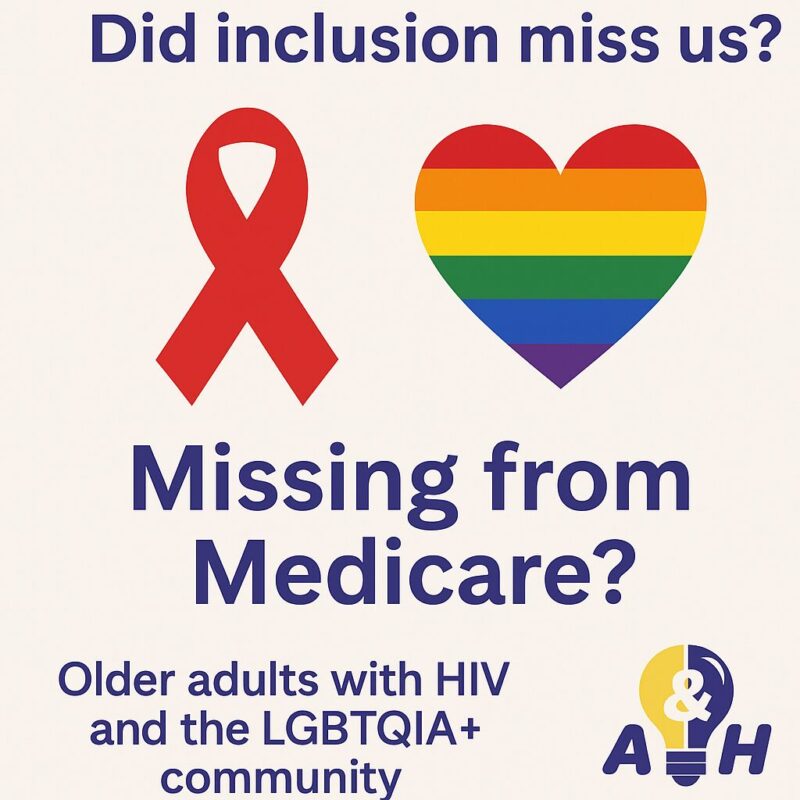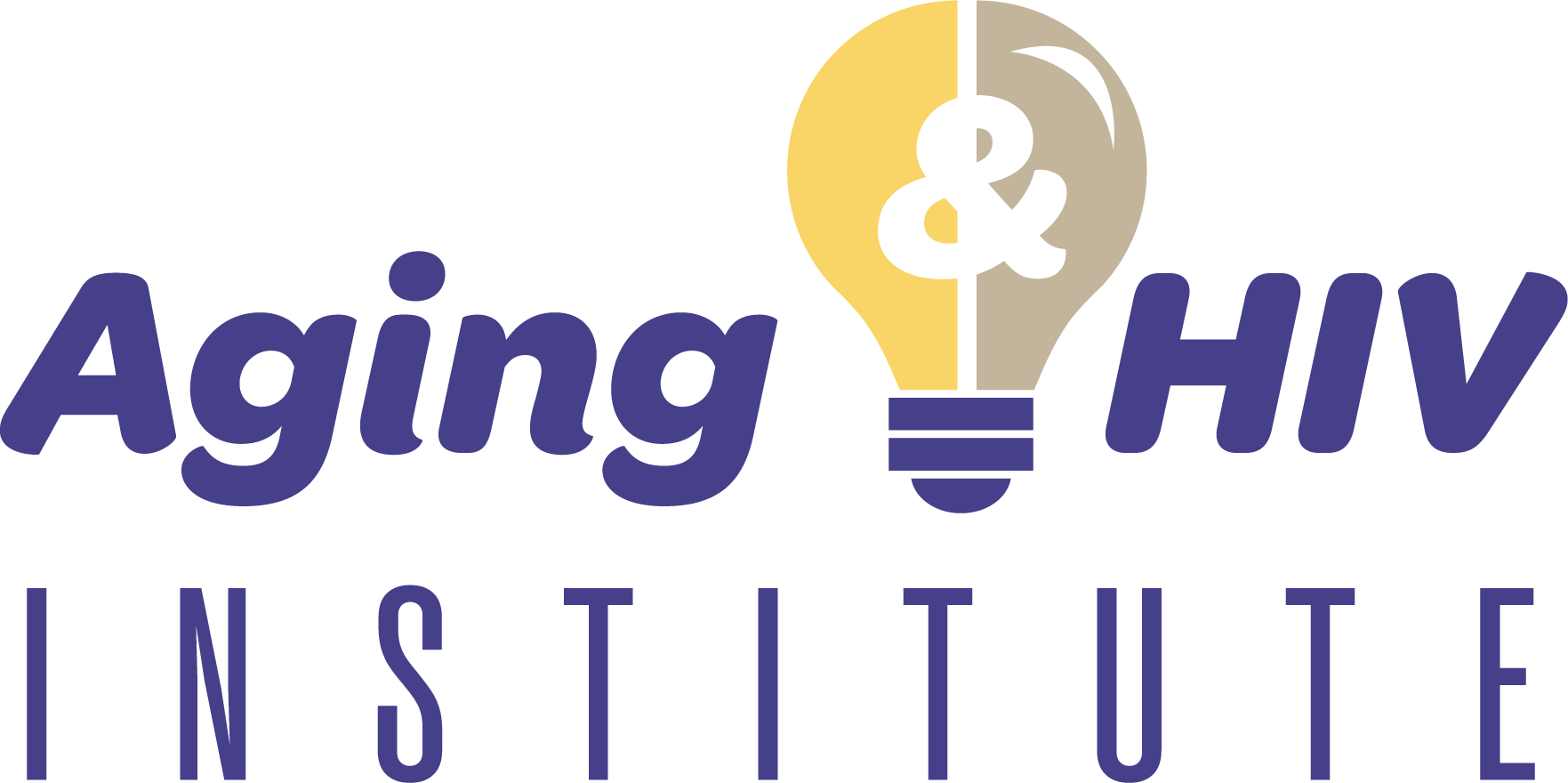Blog Title: Don’t Leave Us Out of Medicare Reform
Published by the Aging and HIV Institute | March 2025
1. Introduction
In March 2025, the California Medicare Collaborative released its eagerly anticipated report with recommendations for improving Medicare reform and HIV-related care for Californians. The report lays out ten thoughtful, evidence-informed strategies to improve outcomes for the 6.6 million Californians enrolled in Medicare, particularly those facing chronic illness, social inequities, or cognitive health needs., Improving Care for Medicare Beneficiaries in California: Recommendations of the California Medicare Collaborative. The report lays out ten thoughtful, evidence-informed strategies to improve outcomes for the 6.6 million Californians enrolled in Medicare, particularly those facing chronic illness, social inequities, or cognitive health needs.

At the Aging and HIV Institute (A&H), we share many of the Collaborative’s values — including the push for better chronic care, culturally competent primary care, and greater equity across diverse communities. Yet as we reviewed the final recommendations, a troubling silence became clear: there is no mention of older adults living with HIV, and LGBTQIA+ elders are barely acknowledged.
California is home to one of the nation’s largest populations of LGBTQIA+ people living with HIV over age 50. If inclusion efforts miss us, Medicare reforms risk replicating the very disparities they aim to address.
2. What Resonates with A&H
We applaud many of the Collaborative’s recommendations, which strongly align with A&H’s work:
✔️ Chronic Illness Management
The report emphasizes improved chronic care coordination and better use of Medicare reimbursement tools. A&H has long advocated for these reforms, particularly for HIV long-term survivors managing multiple comorbidities.
✔️ Access, Equity, and Disparities in Care
We support the Collaborative’s recognition of disparities based on race, income, geography, and language. These are precisely the drivers A&H addresses through our intersectional advocacy on HIV and aging.
✔️ Cognitive and Behavioral Health
We agree that reducing stigma, expanding screenings, and integrating culturally competent mental health care is urgent. These needs are especially acute among people aging with HIV, many of whom face higher risk for early cognitive decline.
3. What’s Missing
Despite its strong foundation, the report leaves out three vital populations and issues:
❌ HIV Inclusion
California has over 140,000 people living with diagnosed HIV, the majority of whom are over age 50. Yet the Collaborative does not mention HIV once, nor the unique needs of those aging with the virus.
❌ LGBTQIA+ Representation
While the report notes disparities broadly, LGBTQIA+ older adults — including Black gay men, trans women, and those aging into Medicare with HIV — receive little to no focus. These communities experience discrimination, medical mistrust, and social isolation at elevated rates.
❌ Workforce Diversity and Training
The report calls for a more diverse healthcare workforce, but it fails to specify the need for LGBTQIA+ inclusion or HIV stigma training — critical components for delivering equitable care to this population.
4. Why Medicare Reform and HIV Inclusion Matter
California’s Medicare reform agenda must include — not overlook — older adults living with HIV and LGBTQIA+ communities. Without intentional focus, the populations most impacted by stigma, health disparities, and structural exclusion are at risk of being left out of the very reforms designed to create health equity.
🧓 Older Adults with HIV Are Aging into Medicare in Large Numbers
The number of Medicare beneficiaries living with HIV has more than doubled since the 1990s, increasing from 42,500 in 1997 to over 103,000 in 2020 — and that only reflects those in traditional Medicare, not Medicare Advantage plans. Overall, 28% of people with HIV in the U.S. are covered by Medicare, many qualifying earlier in life due to HIV-related disability. In fact, 77% of HIV-positive Medicare enrollees originally qualified through a disability pathway, highlighting the early onset of aging-related conditions in this population.
💊 The Health Needs Are Complex — and Costly
Medicare beneficiaries with HIV carry a significantly higher burden of co-occurring health challenges:
- 47% have a mental health condition — compared to just 29% of the general Medicare population.
- 33% have diagnosed depression; 21% have a substance use disorder, and 15% have viral hepatitis.
- Chronic conditions like kidney disease (38%) and liver disease (11%) are also more prevalent — far outpacing rates in the broader Medicare population.
Despite being younger, people with HIV in Medicare often require more intensive, multi-disciplinary care — and yet many systems, particularly cognitive care workflows, are not equipped to meet their needs.
🌈 LGBTQIA+ Elders Are Overlooked and Underserved
In California, the HIV epidemic continues to reflect stark racial and gender disparities — particularly among LGBTQIA+ communities. Black Californians represent just 6% of the state population but accounted for 17% of new HIV diagnoses in 2022. Black men who have sex with men (MSM) face HIV diagnosis rates over four times higher than their White peers. Latinx Californians account for 57% of all new HIV diagnoses, and disparities are worsening — especially among Latinx MSM, whose diagnosis rate is now 3.3 times higher than White MSM.
Transgender women of color remain among the most affected, accounting for 83% of new HIV diagnoses among trans individuals in 2022. Viral suppression — essential for individual health and public health — is lowest among trans people, Black men, and people who inject drugs, often due to stigma, delayed linkage to care, and lack of culturally competent services.
⚖️ The Social Determinants Are Structural — Not Individual
The California Department of Public Health has rightly acknowledged that HIV, hepatitis C, and STIs represent a syndemic — a cluster of interconnected health crises rooted in racism, poverty, housing insecurity, and stigma. For people aging with HIV — especially those who are Black, Latinx, trans, or unhoused — these structural inequities accumulate across a lifetime, leading to earlier disability, poorer health outcomes, and higher risk of death.
These realities must inform how Medicare reform and HIV care are designed and implemented. Without proactive inclusion of those aging with HIV and those who are LGBTQIA+, we risk creating systems that reproduce the very disparities they aim to resolve.
5. A&H’s Call to Action
The Aging and HIV Institute urges policymakers, health systems, and philanthropic partners to:
- Include older adults living with HIV and LGBTQIA+ communities in Medicare equity efforts
- Expand provider training on HIV and LGBTQIA+ cultural humility
- Collect and report sexual orientation and gender identity (SOGI) data in Medicare
- Fund pilot programs for older adults with HIV that integrate behavioral, cognitive, and social care
The California Department of Aging’s LGBTQIA+ Older Adult Survey Report offers important insights that can inform how these reforms are designed with and for the people most affected. We stand ready to partner with government, philanthropy, and health systems to make Medicare work for all Californians.
Endnotes
- California Medicare Collaborative. (March 2025). Improving Care for Medicare Beneficiaries in California.
👉 https://www.calquality.org/initiative/california-medicare-collaborative/ - Kaiser Family Foundation. (2023). Medicare and People with HIV.
👉 https://www.kff.org/hivaids/report/medicare-and-people-with-hiv - California Department of Public Health, Office of AIDS. (2024). HIV/AIDS Epidemiology and Health Disparities Report, 2022.
👉 https://www.cdph.ca.gov/Programs/CID/DOA/CDPH%20Document%20Library/OA-HIV-Epi-Disparities-Report-2022.pdf - California Department of Public Health. (2021). Ending the Epidemics: Integrated Strategic Plan 2022–2026.
👉 https://www.cdph.ca.gov/Programs/CID/DOA/Pages/OA-End-the-Epidemics.aspx

Leave a Reply